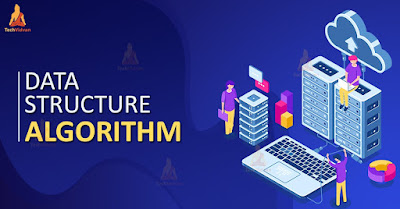Code
DSA Notes: Understanding Algorithm Analysis and Basic Concepts
DSA Notes: Understanding Algorithm Analysis and Basic Concepts
Welcome to the first part of our Data Structures and Algorithms (DSA) notes,
designed to help you build a strong foundation in computer science. This section covers fundamental concepts in algorithm analysis, essential mathematical tools, and an introduction to bitwise operations.
What is Algorithm Analysis?
Algorithm analysis is crucial for understanding how efficiently a program performs. It helps predict the time and space complexity of an algorithm, regardless of the specific machine or programming language used.
Key aspects include:
》Time Complexity: This refers to the time taken by an algorithm to execute.
》Space Complexity: This predicts the memory size an algorithm occupies during execution.
Asymptotic Notation
Asymptotic notations are mathematical tools used to describe the running time of algorithms. They provide a way to express how the execution time or memory usage of a program changes with input size 'n'.
The main notations are:
》Big O Notation (O): This provides an upper bound on the running time of an algorithm, representing the worst-case scenario. It ignores lower-order terms and constant factors. For example, f(n) = O(g(n)) means f(n) grows no faster than g(n).
Loops: Different loop structures have varying time complexities. For instance, a simple loop iterating 'n' times often results in O(n) complexity, while loops that halve the input (i = i / c) or multiply it (i = i * c) often have logarithmic complexity (O(log n)).
Recursion: Recursive functions can be analyzed using methods like the Recursion Tree Method, where non-recursive parts form the root and recursive calls become children. This helps visualize the work done at each level to determine overall complexity.
Basic Mathematics for DSA
A solid grasp of mathematical concepts is fundamental to DSA:
* Counting Digits: Methods include iterative solutions and logarithmic approaches (e.g., floor(log10(n) + 1) for base 10).
* Progressions: Understanding Arithmetic Progression (AP) and Geometric Progression (GP) is essential for various analyses.
* Mean and Median: Basic statistical measures for analyzing data sets.
* Prime Numbers: Concepts like prime factorization and properties of prime numbers (e.g., representable as 6n ± 1) are important.
* LCM and HCF: Methods for finding Least Common Multiple and Highest Common Factor.
Bitwise Operators in C++
Bitwise operators perform operations on the binary representation of numbers.
Common operators include:
* AND (&): Sets a bit if both corresponding bits are 1.
* OR (|): Sets a bit if at least one of the corresponding bits is 1.
* XOR (^): Sets a bit if the corresponding bits are different.
* Left Shift (<<): Shifts bits to the left, equivalent to multiplying by powers of 2.
* Right Shift (>>): Shifts bits to the right, equivalent to dividing by powers of 2.
* Counting Set Bits: Algorithms like Brian Kernighan's method or lookup tables can efficiently count the number of '1' bits in a binary representation.
* Power of 2 Check: Efficiently determining if a number is a power of 2 using bitwise operations (n > 0 && (n & (n-1)) == 0).
This concludes the first part of our DSA notes. Stay tuned for more advanced topics!


Post a Comment
0 Comments